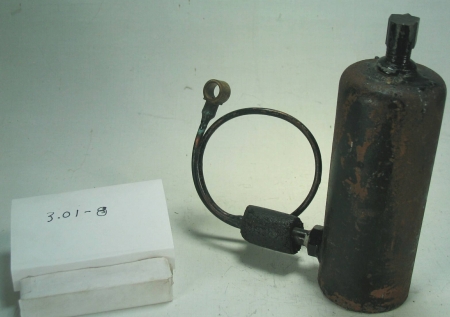Refrigerant Flow Controls – Household
Representative of the new generation of compact, more finely calibrated high side float controls for household cabinet refrigerators that emerged into the 1940’s. Housed in a refrigerant receiver, it was used for metering liquid refrigerant into a flooded evaporator
Model unknown, Kelvinator of Canada, London Ont., Circa 1945.
Section of liquid line moulded foam rubber insulated cover; Inverted flare tubing connectors, part of a compact tubing connector system evolved in the 1940’s for household and packaged commercial refrigeration equipment applications.
Technical Significance:
Typical of the technology as it emerged into the 1940’s, as used briefly, principally by Kelvinator in their household cabinet refrigerators.
A brass float valve and needle seat assembly was located in the base of the refrigerant, liquid receiver, from where the liquid was metered into an insulated liquid line carrying it to the inlet of the evaporator. The float opens the valve at a predetermined level of refrigerant in the receiver, as it is returned from the high side of the compressor.
The system is subject to critical refrigerant charge, much like the capillary tube device to follow. However maintaining the critical charge necessary for trouble free operation in open type condensing units, subject to compressor seal and other leaks was always a challenge.
Industrial Significance:
The high side float refrigerant meter system, used for flooded evaporators, was the source of some engineering interest and production in the mid 1930’s, but was then largely abandoned, along with the low side float, for the mainstream of household and small commercial refrigeration applications – for reasons of cost, reliability and serviceability and the engineering design constraints it introduced.
By this time much simpler trouble free metering technology was at hand. Kelvinator, it seems, continued the practice later than others, possibly because they had experience and an investment in the technology that others had not.


